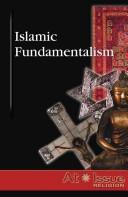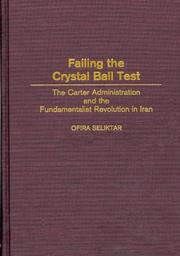| Listing 1 - 10 of 434 | << page >> |
Sort by
|
Book
Year: 2022 Publisher: Universitätsverlag Göttingen
Abstract | Keywords | Export | Availability | Bookmark
 Loading...
Loading...Choose an application
- Reference Manager
- EndNote
- RefWorks (Direct export to RefWorks)
The present qualitative interview study has set itself the task of reappraising the developments from the emergence to the official ban of the German-speaking Islamic Circle (DIK) and the associated mosque. In order to approach the question of how it was possible for a radical Islamic mosque to emerge and establish itself in the middle of Hildesheim's Nordstadt, we use the "hotbed" approach1 as a basis for analysis. According to this approach, the geographic distribution of the places of origin of those who left to fight in IS territory is by no means evenly distributed; rather, certain places or neighborhoods stand out in which recurring factors that condition radicalization can be identified.To examine why the now-banned Hildesheim mosque association around the convicted "IS chief recruiter" in Germany, Ahmad A. alias "Abu Walaa," became a hotbed, we conducted a total of nine interviews in the spring and summer of 2021. We spoke with members of the local Muslim community and former visitors of the DIK mosque, non-Muslim persons living in the immediate vicinity of the mosque, as well as with representatives of authorities, institutions and civil society institutions. The empirical material is supplemented by an analysis of Abu Walaa's social media content, in particular his Telegram channels, as well as by recordings of various court hearings of the criminal trial against Abu Walaa that we attended.Translated with www.DeepL.com/Translator (free version)
islamism --- radicalism --- Germany --- Hildesheim
Book
ISBN: 2228501204 9782228501200 Year: 1977 Publisher: Paris: Payot,
Abstract | Keywords | Export | Availability | Bookmark
 Loading...
Loading...Choose an application
- Reference Manager
- EndNote
- RefWorks (Direct export to RefWorks)
Les livres de W. Montgomery Watt : Mahomet à La Mecque et Mahomet à Médine sont deux classiques des études islamologiques. Regroupés ici ils forment l'ouvrage de référence pour quiconque s'intéresse à l'Islam, à sa naissance et à son essor spectaculaire. W. Montgomery Watt a su déborder le cadre de la biographie spirituelle pour restituer avec une infinie précision le contexte social dans lequel s'est faite la prédication de Mahomet, qui explique en grande partie la rapidité de son extension religieuse, mais aussi politique. Alors que se pose chaque jour la question de la place de l'Islam dans le monde contemporain, ce retour aux sources d'une religion qui n'a rien perdu de son pouvoir d'entraînement est aussi un guide pour la compréhension de notre époque. -- Description from (Jan. 26, 2012).
Book
Year: 2022 Publisher: Universitätsverlag Göttingen
Abstract | Keywords | Export | Availability | Bookmark
 Loading...
Loading...Choose an application
- Reference Manager
- EndNote
- RefWorks (Direct export to RefWorks)
The present qualitative interview study has set itself the task of reappraising the developments from the emergence to the official ban of the German-speaking Islamic Circle (DIK) and the associated mosque. In order to approach the question of how it was possible for a radical Islamic mosque to emerge and establish itself in the middle of Hildesheim's Nordstadt, we use the "hotbed" approach1 as a basis for analysis. According to this approach, the geographic distribution of the places of origin of those who left to fight in IS territory is by no means evenly distributed; rather, certain places or neighborhoods stand out in which recurring factors that condition radicalization can be identified.To examine why the now-banned Hildesheim mosque association around the convicted "IS chief recruiter" in Germany, Ahmad A. alias "Abu Walaa," became a hotbed, we conducted a total of nine interviews in the spring and summer of 2021. We spoke with members of the local Muslim community and former visitors of the DIK mosque, non-Muslim persons living in the immediate vicinity of the mosque, as well as with representatives of authorities, institutions and civil society institutions. The empirical material is supplemented by an analysis of Abu Walaa's social media content, in particular his Telegram channels, as well as by recordings of various court hearings of the criminal trial against Abu Walaa that we attended.Translated with www.DeepL.com/Translator (free version)
Society & social sciences --- islamism --- radicalism --- Germany --- Hildesheim
Book
Year: 2022 Publisher: Universitätsverlag Göttingen
Abstract | Keywords | Export | Availability | Bookmark
 Loading...
Loading...Choose an application
- Reference Manager
- EndNote
- RefWorks (Direct export to RefWorks)
The present qualitative interview study has set itself the task of reappraising the developments from the emergence to the official ban of the German-speaking Islamic Circle (DIK) and the associated mosque. In order to approach the question of how it was possible for a radical Islamic mosque to emerge and establish itself in the middle of Hildesheim's Nordstadt, we use the "hotbed" approach1 as a basis for analysis. According to this approach, the geographic distribution of the places of origin of those who left to fight in IS territory is by no means evenly distributed; rather, certain places or neighborhoods stand out in which recurring factors that condition radicalization can be identified.To examine why the now-banned Hildesheim mosque association around the convicted "IS chief recruiter" in Germany, Ahmad A. alias "Abu Walaa," became a hotbed, we conducted a total of nine interviews in the spring and summer of 2021. We spoke with members of the local Muslim community and former visitors of the DIK mosque, non-Muslim persons living in the immediate vicinity of the mosque, as well as with representatives of authorities, institutions and civil society institutions. The empirical material is supplemented by an analysis of Abu Walaa's social media content, in particular his Telegram channels, as well as by recordings of various court hearings of the criminal trial against Abu Walaa that we attended.Translated with www.DeepL.com/Translator (free version)
Society & social sciences --- islamism --- radicalism --- Germany --- Hildesheim

ISBN: 9780737736892 Year: 2008 Publisher: Farmington Hills, MI Greenhaven Press / Gale, Cengage Learning
Abstract | Keywords | Export | Availability | Bookmark
 Loading...
Loading...Choose an application
- Reference Manager
- EndNote
- RefWorks (Direct export to RefWorks)
Islamism --- Jihad --- secularism --- institutionalized Christianity in the West --- the growth of Islamism --- the United States --- the appeal of Islamism --- appeasement --- tolerance --- oppression --- gender --- Islam --- democracy
Book
ISBN: 9780300197723 9780300216011 0300216017 0300197721 Year: 2016 Publisher: New Haven, CT
Abstract | Keywords | Export | Availability | Bookmark
 Loading...
Loading...Choose an application
- Reference Manager
- EndNote
- RefWorks (Direct export to RefWorks)
An incisive analysis of Islamist movements in the Middle East A political, social, and cultural battle is currently raging in the Middle East. On one side are the Islamists, those who believe Islam should be the region’s primary identity. In opposition are nationalists, secularists, royal families, military establishments, and others who view Islamism as a serious threat to national security, historical identity, and a cohesive society. This provocative, vitally important work explores the development of the largest, most influential Islamic groups in the Middle East over the past century. Tarek Osman examines why political Islam managed to win successive elections and how Islamist groups in various nations have responded after ascending to power. He dissects the alliances that have formed among Islamist factions and against them, addressing the important issues of Islamism’s compatibility with modernity, with the region’s experiences in the twentieth century, and its impact on social contracts and minorities. He explains what Salafism means, its evolution, and connections to jihadist groups in the Middle East. Osman speculates on what the Islamists’ prospects for the future will mean for the region and the rest of the world.
Islamic fundamentalism. --- Fundamentalism, Islamic --- Islamism --- Islam --- Religious fundamentalism
Book
ISBN: 2130639305 9782130646907 2130646905 9782130639305 Year: 2004 Publisher: Paris : Presses Universitaires de France,
Abstract | Keywords | Export | Availability | Bookmark
 Loading...
Loading...Choose an application
- Reference Manager
- EndNote
- RefWorks (Direct export to RefWorks)
Première enquête approfondie sur l'islamisme jihadiste dans une société arabe et musulmane, ce livre saisissant montre la façon dont s'est manifesté, dès le début des années 90, dans les camps des réfugiés du Liban, un phénomène qui revêt aujourd'hui une dimension planétaire, dont les enjeux concernent aussi bien l'avenir de l'islam que celui des relations entre l'Europe et le monde arabe. Ce livre passionnant cherche à comprendre comment une nouvelle idéologie qui place le jihad dans sa dimension guerrière et militaire au cœur de la croyance religieuse, a pu faire souche en milieu palestinien, entraînant le basculement d'une minorité active dans le champ de l'islamisme mondial et déclenchant une guerre civile musulmane dans l'espace confiné des camps.
Islam and world politics. --- Jihad. --- Religion and politics. --- Islamism - Geopolitics.
Book
ISBN: 3110265109 3110265141 9783110265101 9783110265149 1283627787 9786613940230 Year: 2012 Publisher: Berlin Boston De Gruyter
Abstract | Keywords | Export | Availability | Bookmark
 Loading...
Loading...Choose an application
- Reference Manager
- EndNote
- RefWorks (Direct export to RefWorks)
Are cartoons of Mohammed today's anti-Semitic postcards? Are the protests against the construction of mosques in German towns comparable with the cries of "Jews out!" during the German Empire? Following a heated public debate, comparisons between present hostility to Islam and traditional forms of anti-Semitism are also occupying political scientists, religious scholars and contemporary historians. Certainly in the future there will also be a need for a comparative analysis of the mechanisms of the stigmatisation and ostracism of minorities. This volume deals with the backgrounds to old-new hostile stereotypes of Jews and Muslims in Germany, and presents the views of media experts and members of both minorities. Sind Mohammed-Karikaturen die antisemitischen Postkarten von heute? Gleichen die Proteste gegen den Moscheenbau in deutschen Städten dem "Juden-Raus"-Ruf des Kaiserreiches? Vergleiche zwischen heutiger Islamfeindschaft und traditionellen Spielarten des Antisemitismus beschäftigen nach einer erregten öffentlichen Debatte auch Politologen, Religionswissenschaftler und Zeithistoriker. Mechanismen der Stigmatisierung und Ausgrenzung von Minderheiten werden in jedem Fall auch in Zukunft komparativ zu analysieren sein. Der Band widmet sich den Hintergründen alt-neuer Feindbilder gegen Muslime und Juden in Deutschland, wobei auch Medienexperten und Angehörige beider Minderheiten zu Wort kommen.
Antisemitism --- Islamophobia --- Islamophobia. --- Antisemitism. --- Anti-Semitism. --- Islamism. --- Judaism. --- Prejudices. --- Stereotypes.
Book
ISBN: 0833093800 0833091867 9780833093806 9780833091864 Year: 2015 Publisher: Santa Monica, California : RAND Corporation,
Abstract | Keywords | Export | Availability | Bookmark
 Loading...
Loading...Choose an application
- Reference Manager
- EndNote
- RefWorks (Direct export to RefWorks)
Terrorism --- Islamic fundamentalism --- Prevention --- International cooperation. --- Fundamentalism, Islamic --- Islamism --- Islam --- Religious fundamentalism

ISBN: 0275968723 0313002770 9780313002779 9798400649516 Year: 2000 Publisher: Westport, Conn. : London : Praeger, Bloomsbury Publishing,
Abstract | Keywords | Export | Availability | Bookmark
 Loading...
Loading...Choose an application
- Reference Manager
- EndNote
- RefWorks (Direct export to RefWorks)
United States --- Foreign relations --- Iran --- Islamic fundamentalism --- Fundamentalism, Islamic --- Islamism --- Islam --- Religious fundamentalism
| Listing 1 - 10 of 434 | << page >> |
Sort by
|

 Search
Search Feedback
Feedback About UniCat
About UniCat  Help
Help News
News